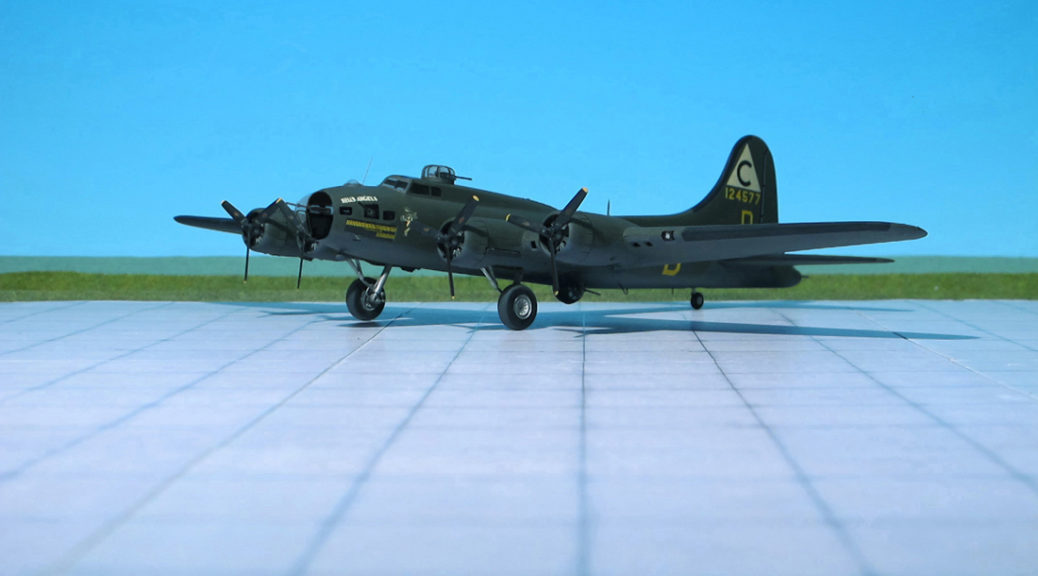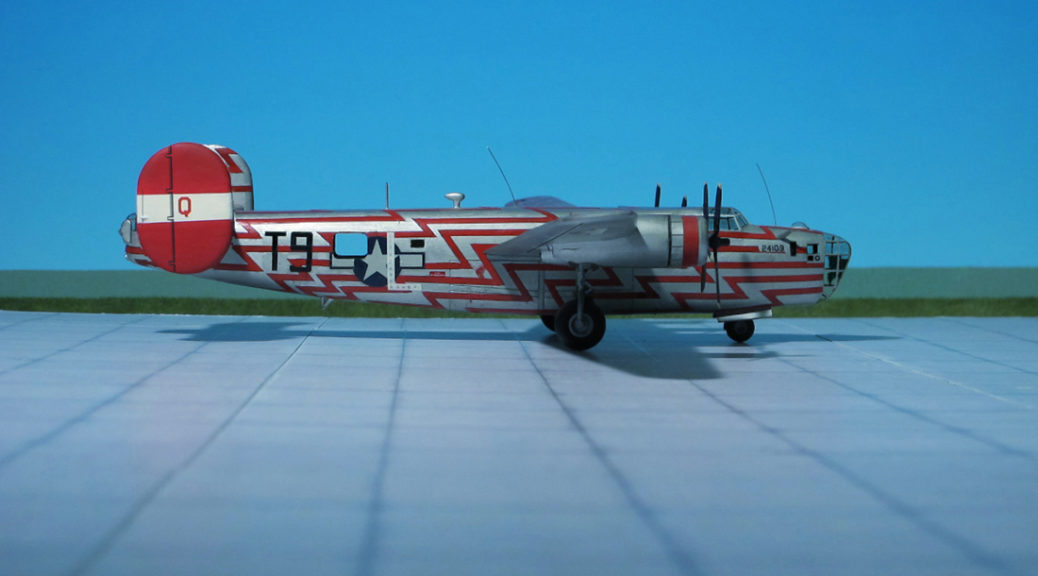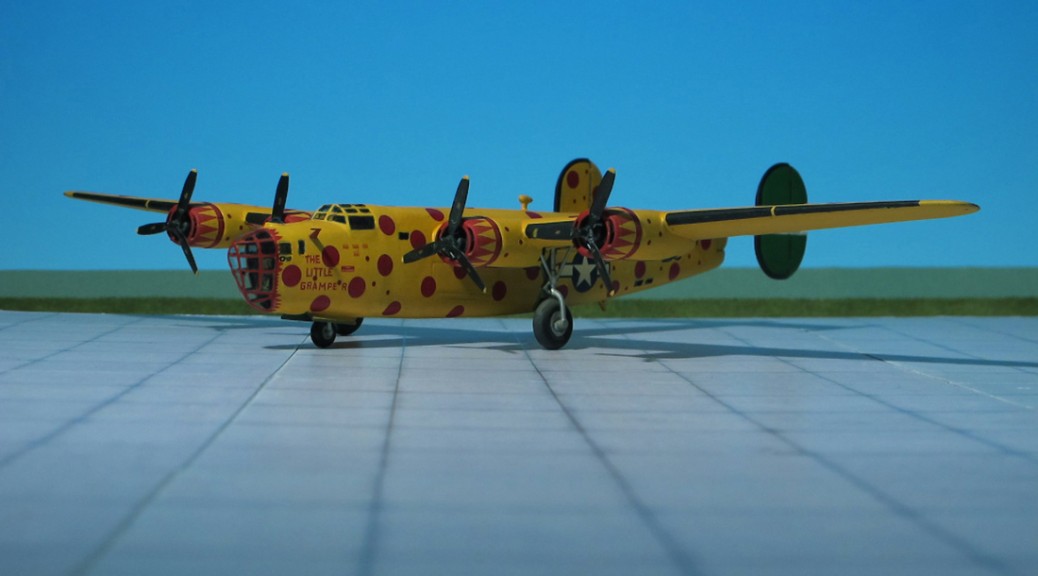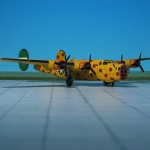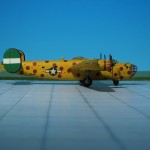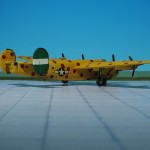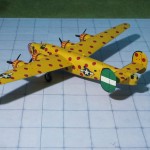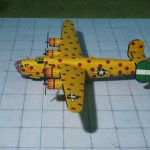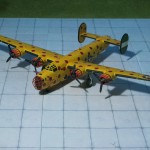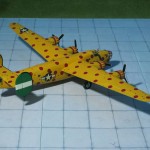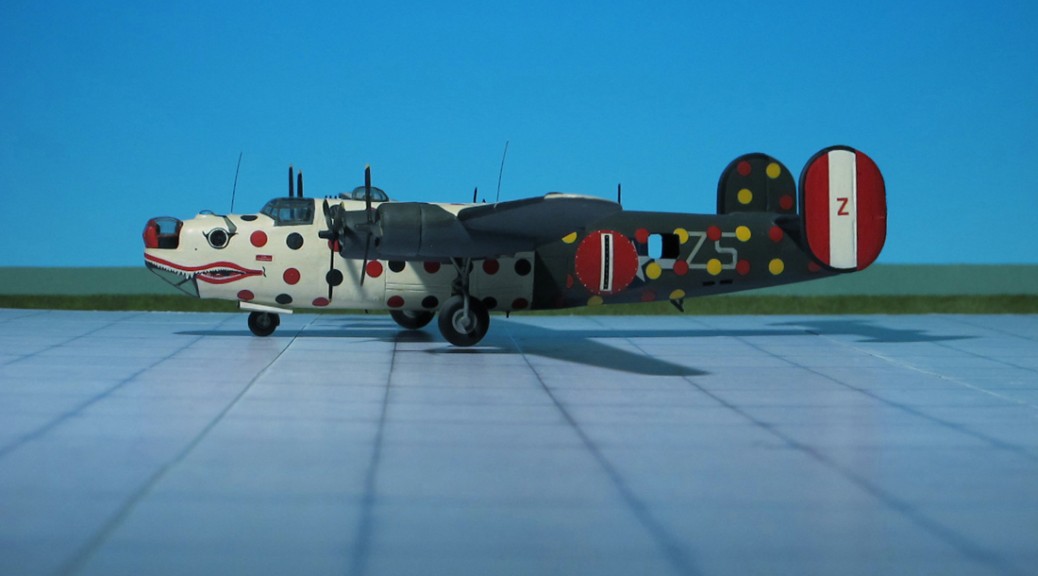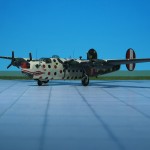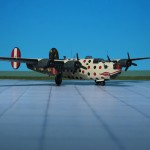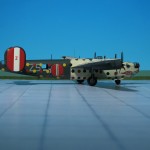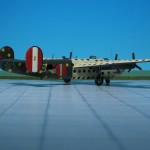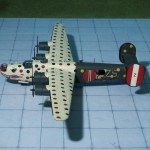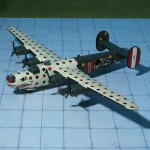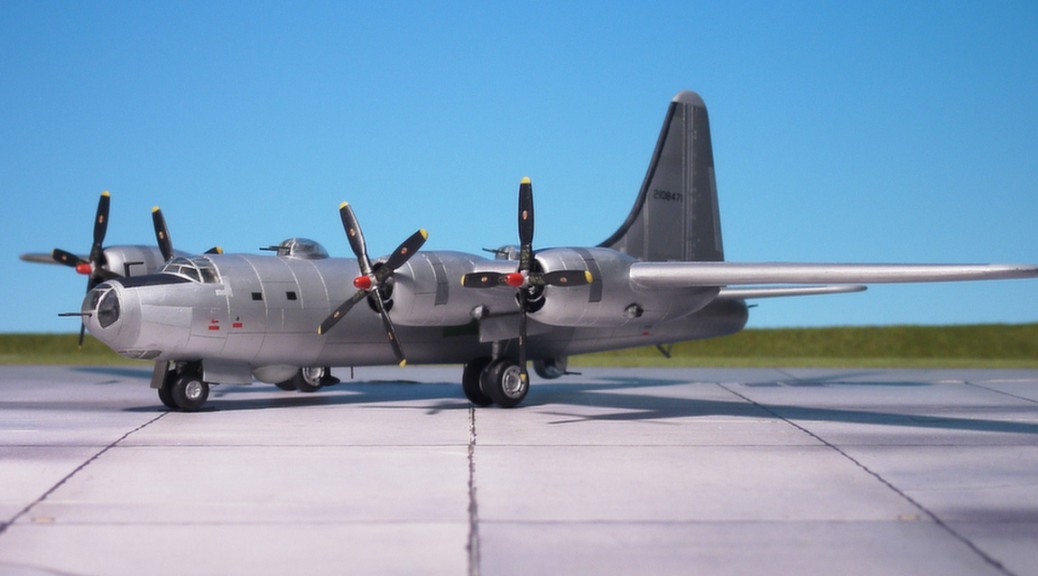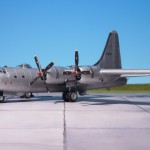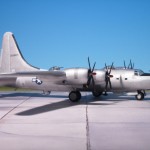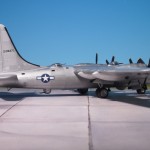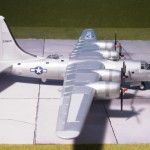TYPE: Heavy bomber
ACCOMMODATION: Crew of ten
POWER PLANT: Four Wright R-1820-97 Cyclone supercharged radial engines, rated at 1,200 hp each
PERFORMANCE: 287 mph
COMMENT: The Boeing B-17 “Flying Fortress” was a four-engine heavy bomber developed in the 1930s for the United States Army Air Corps (USAAC). Competing against Douglas and Martin for a contract to build 200 bombers, the Boeing entry (prototype Model 299, XB-17) outperformed both competitors and exceeded the air corps’ performance specifications. Although Boeing lost the contract (to the Douglas B-18 “Bolo”) because the prototype crashed, the air corps ordered 13 more B-17s for further evaluation. From its introduction in 1938, the B-17 “Flying Fortress” evolved through numerous design advances becoming the third-most produced bomber of all time, behind the American four-engined Consolidated B-24 “Liberator” and the German multirole, twin-engined Junkers Ju 88.
On 8 August 1934, the USAAC tendered a proposal for a multiengine bomber to replace the Martin B-10. The Air Corps was looking for a bomber capable of reinforcing the air forces in Hawaii, Panama, and Alaska. Requirements were for it to carry a “useful bombload” at an altitude of 10,000 ft, a range of 2,000 mi and a top speed of at least 250 mph was desired.
The prototype XB-17, with the Boeing factory designation of Model 299, was built at Boeing’s own expense. It combined features of the company’s experimental XB-15 bomber and Model 247 transport. The first flight of the Model 299 was on July 1935 and on 20 August 1935, the prototype flew from Seattle to Wright Field in nine hours and three minutes with an average cruising speed of 252 miles per hour, much faster than the competition.
The USAAC had been impressed by the prototype’s performance, and on January 1936, through a legal loophole, the air corps ordered 13 YB-17s (designated Y1B-17 after November 1936 to denote its special F-1 funding) for service testing.
The YB-17 incorporated a number of significant changes from the Model 299, including more powerful Wright R-1820-39 Cyclone engines. Although the prototype was company-owned and never received a military serial (the B-17 designation itself did not appear officially until January 1936, nearly three months after the prototype crashed), the term “XB-17” was retroactively applied to the airframe and has entered the lexicon to describe the first “Flying Fortress”.
Opposition to the air corps’ ambitions for the acquisition of more B-17s faded, and in late 1937, 10 more aircraft designated B-17B were ordered to equip two bombardment groups, one on each U.S. coast. Improved with larger flaps and rudder and a well-framed, 10-panel plexiglas nose, the B-17Bs were delivered in five small batches between July 1939 and March 1940. In July 1940, an order for 512 B-17s was issued, but at the time of the attack on Pearl Harbor, fewer than 200 were in service with the army.
The aircraft went through several alterations in each of its design stages and variants. Of the 13 YB-17s ordered for service testing, 12 were used by the 2nd Bomb Group of Langley Field, Virginia, to develop heavy bombing techniques, and the 13th was used for flight testing at the Material Division at Wright Field, Ohio. Experiments on this aircraft led to the use of a quartet of General Electric turbo-superchargers which would become standard on the B-17 line
As the production line developed, Boeing engineers continued to improve upon the basic design. To enhance performance at slower speeds, the B-17B was altered to include larger rudders and flaps. The B-17C changed from three bulged, oval-shaped machine gun blisters to two flush, oval-shaped machine gun window openings, and on the lower fuselage, a single “bathtub” machine gun gondola housing, which resembled the similarly configured and located ventral defensive emplacement on the German Heinkel He 111P-series medium bomber.
While models A through D of the B-17 were designed defensively, the large-tailed B-17E was the first model primarily focused on offensive warfare. The B-17E was an extensive revision of the Model 299 design: The fuselage was extended by 10 ft; a much larger rear fuselage, vertical tailfin, rudder, and horizontal stabilizer were added to the design; a gunner’s position was added in the new tail; the nose (especially the bombardier’s well-framed, 10-panel nose glazing) remained relatively the same as the earlier B through D versions had, but with the addition of a Sperry electrically powered manned dorsal gun turret just behind the cockpit, and the similarly powered Sperry-built manned ventral ball turret just aft of the bomb bay. The B-17’s turbocharged Wright R-1820 Cyclone 9 engines were upgraded to increasingly more powerful versions of the same power plants multiple times throughout its production, and similarly, the number of machine gun emplacement locations was increased to enhance the aircraft’s combat effectiveness.
In April 1942, the B-17F was introduced onto the production lines, and outwardly this variant differed from the B-17E only in having an extended Plexiglas nose which was frameless except for the optically flat bomb-aiming panel, paddle-blade airscrews for maximum operating performance, extra fuel cells, improvements of the bomb stowage, brake system, communications equipment and oxygen system. As the cross weight was increased, the undercarriage was strengthened.
Owing to the constant modifications being applied to aircraft on the production lines and the immense scale of production orders, a system of “Block Designations” was instituted. Thus, the first Boeing-built B-17F Fortress became B-17F-1-BO, and all aircraft in this production block were identical insofar as equipment and installations were concerned. Blocks B-17F-5-BO, -10-BO, etc., followed, the intervening number being left to indicate subsequent changes made at modification centres. Production of the B-17F continued for 15 months, during which 2,300 were built by Boeing, 600 by Douglas (suffix DL) and 500 by Locked Vega (suffix VE). The final production blocks of the B-17F from Douglas’ plants did, however, adopt the Bendix “chin turret” with two machine guns, giving them a much-improved forward defense capability.
The B-17F variants were the primary versions flying for the Eighth Air Force to face the Germans in 1943. The maximum bomb load of the first B-17F was 4.350 kg, but on typical missions to Germany, Eighth Air Force Fortresses carried 1.800- 2.270 kg over operating ranges averaging 1,400 miles. Beyond these distances, the bomb load fell rapidly, so that the effective combat radius of B-17F was about a maximum of 800 miles. Later modifications already referred to increase the fuel capacity as well as bomb load and by that the USAAF was enabled to build up an immense striking force in the European Theatre of Operations (Ref.: 4, 24).
